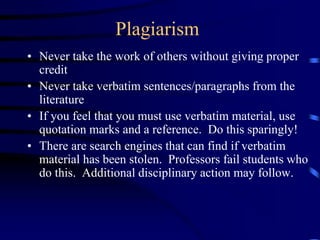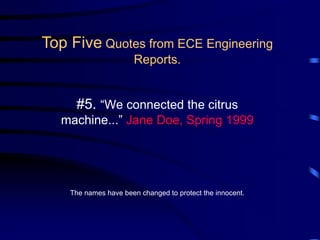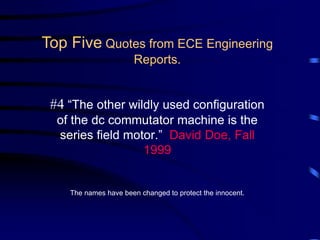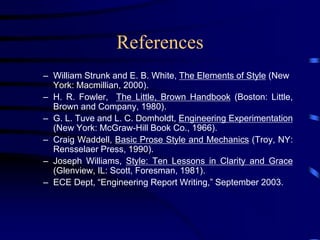This document provides guidance on technical report writing. It outlines the typical elements and structure of a technical report, including a title, abstract, introduction, theory/analysis, experimental procedures, results, discussion, conclusions, acknowledgments, references, and appendix. It offers tips on writing mechanics such as spelling, grammar, acronyms, equations, figures, and units. It also discusses active vs. passive voice and first vs. third person depending on the intended audience. The document provides examples and recommends starting with the results section to analyze data before introducing context and hypotheses.















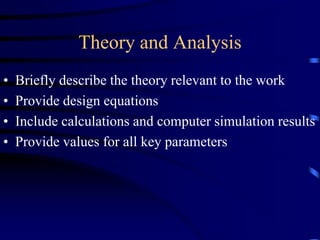

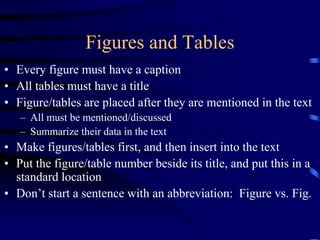



![References (examples)
• [1] A. Student and B. Professor, “Very
Important Project,” in Journal of
Irreproducable Research, vol. 13, no. 9, pp.
25-31, Nov. 2004.
• [2] C. Dean, The Book of Earth-Shattering
Research, Husky Press, Storrs, CT, 2005.](https://image.slidesharecdn.com/ece4901technicalwriting2013-230215130211-75c0af41/85/ECE-4901-Technical-Writing-2013-ppt-22-320.jpg)
